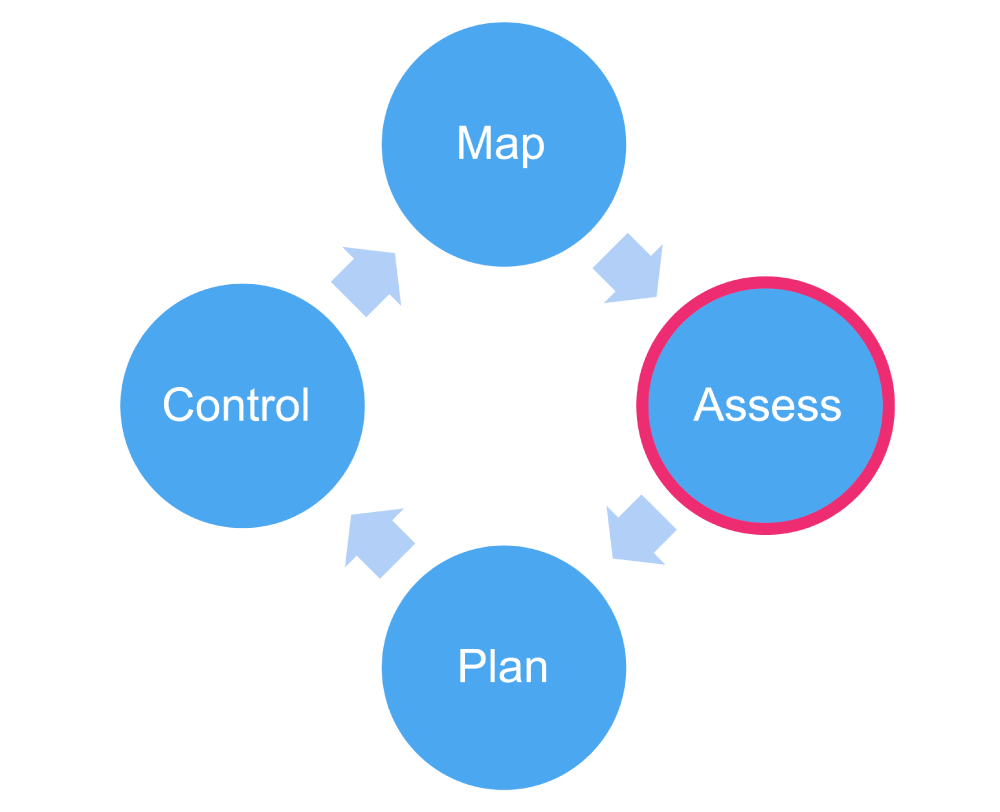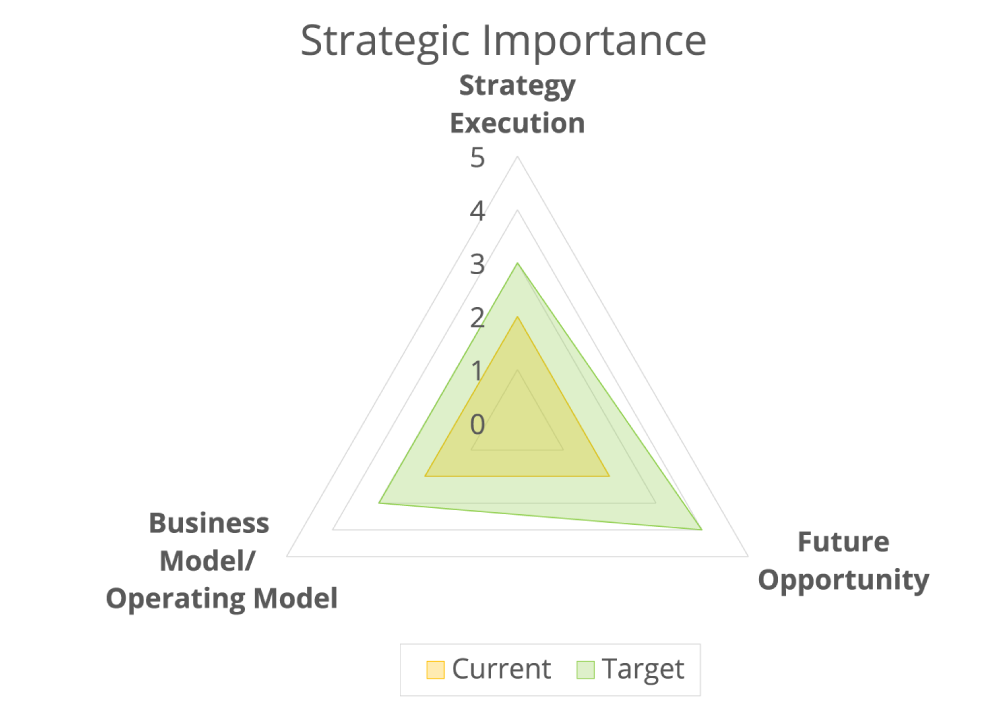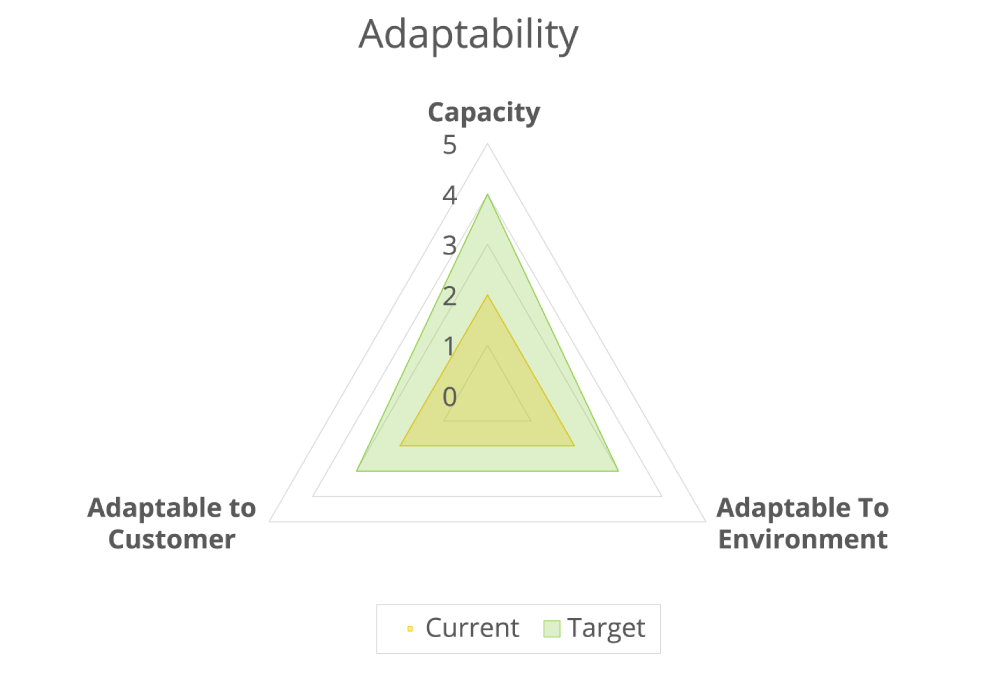An Approach How to Assess Business Capabilities

Business capabilities are at the core of successful enterprise transformation. Capability-Based Planning (CBP) provides a structured way to align strategy with execution by mapping, assessing, planning, and controlling capabilities across the organization.
In this article, we focus on the Assess phase, where organizations evaluate their business capabilities to understand their strategic importance, maturity, and adaptability.
This step is crucial to identify which capabilities require investment, where improvements are needed, and how adaptable the enterprise is to change. By applying heatmapping techniques and structured assessments, leaders can make smarter investment decisions and strengthen alignment with long-term goals.
The Capability-Based Planning Cycle
Capability-Based Planning activities are structured in a cycle: Map, assess, plan, and control. It shows us where to begin and the next steps to gradually increase the impact on the organization.
In the “Map” phase, we define and create the Capability Map, which we can use to analyze the organization, assessing the strategic and architectural alignment of the capability framework.
In earlier installments of this blog series, we provided guidance on achieving this. This blog explores the “Assess” phase, where Capabilities are measured based on their contribution to our business strategy and identifying opportunities to improve maturity. This is visualized on the Capability Map, e.g. using heatmapping techniques.

Capability-Based Planning Approach
Capability Assessment Approach
Our approach to assessing Business Capabilities includes defining three dimensions. To effectively assess Capabilities and execute Capability-Based Planning, we need to combine these three dimensions because there are clear relationships and dependence between them. These three dimensions are:
Strategic Importance As explained before, Business Capabilities link to the strategic objectives of an enterprise. From this, we can derive their relative strategic importance to the organization.
Executives must prioritize and focus investment on the right Capabilities and for managers to understand which Capabilities are critical to success.
The key question answered here is: “Which Capabilities are required to successfully deliver a strategy?” For this dimension, we’ve identified three key metrics relevant for an assessment of the Strategic Importance of a Business Capability: - Strategy Execution: Is the Capability required in the context of a strategic goal? - Business/ Operating Model: Does the Capability provide critical support or resource for a key value proposition? - Future Opportunity: Does the Capability provide critical support or resources for future enhanced or new value propositions?
Strategic Importance Dimensions
Maturity In a Capability Map, we define the set of Capabilities that an organization requires to be successful against its formulated strategy.
However, just having the Capability in place isn’t enough because we also need to be very good at it, especially those Capabilities with high strategic importance.
For managers, an assessment of Capabilities based on maturity identifies where improvement and development are required. It shows both change leaders and change experts where the key problems lie.
Maturity dimensions
The key question answered here is: “Which Capabilities are currently performing below expected or required performance levels?”. These are the Capabilities that may require investing in various improvements. You would typically prioritize those dimensions where the highest difference between current and target levels is. The maturity of a Business Capability is determined based on its maturity in the common dimensions of People, Processes, Technology, and Information.
Adaptability Capability-based Planning is not a one-off exercise: an organization needs to align strategic goals with the required Capability, and continuously retain this alignment as strategic goals may shift.
As we have argued in the past, adaptability is essential for the modern enterprise. Any organization needs the flexibility to respond to changes in the environment and the ecosystem.
An assessment of adaptability gives executives insights into how easy it is to change Capabilities, and for managers on which Capabilities need to be more flexible or resilient.
The key question answered here is: “Which Capabilities are problematic to improve?”In our vision, there are three key metrics important to determine the level of adaptability of a Business Capability: - Adaptability to the environment: What’s the role of the Capability for the response to external (e.g. law or regulation) and internal (e.g. business interruption) dynamics? - Adaptability to the customer: What’s the role of the Capability for the response to changing customer needs? - Capacity: Can the Capability respond to changing demand?
Adaptability dimensions
What’s next?
In the next installment in our Blog Series: Business Architecture and Capability-Based Planning, we’ll look at how you can assess Capabilities with Bizzdesign Horizzon. You’ll learn how:
- To determine a meaningful score on the key metrics relevant for an assessment of the Strategic Importance of a Business Capability
- The maturity of a Business Capability is determined in relation to people, processes, technology, and information
- Bizzdesign Horizzon supports the assessment of Capabilities
Summary
Capability-based planning ensures that enterprises focus on the right investments, improve weak areas, and remain adaptable in a changing environment. By assessing capabilities across strategic importance, maturity, and adaptability, organizations gain clear insights into where to prioritize resources.
With the right tools, such as Bizzdesign Horizzon, you can visualize these assessments, identify gaps, and continuously align business capabilities with strategy. Ultimately, this approach empowers decision-makers to drive transformation more effectively and ensure long-term success.
FAQs
Capability-Based Planning (CBP) is a structured approach to align enterprise strategy with execution by mapping, assessing, and managing business capabilities.
Assessing business capabilities helps organizations identify critical areas for investment, measure maturity, and ensure alignment with strategic objectives.
Capabilities are assessed across strategic importance, maturity (people, processes, technology, information), and adaptability to ensure resilience and performance.
Adaptability shows how easily a capability can respond to external pressures, customer needs, and changing demand. It is vital for long-term enterprise resilience.
Tools like Bizzdesign Horizzon help organizations visualize, measure, and monitor capabilities, enabling smarter investment decisions and continuous alignment.






